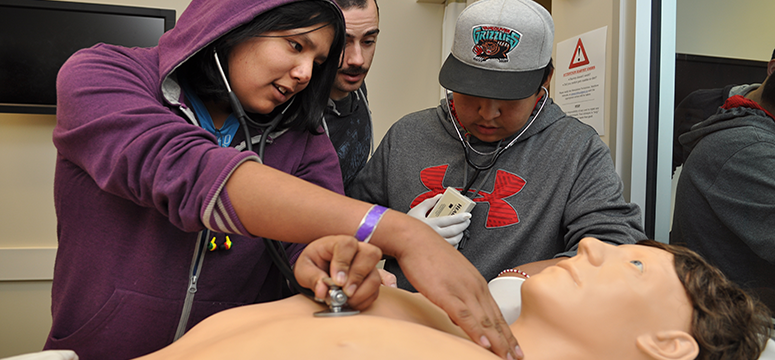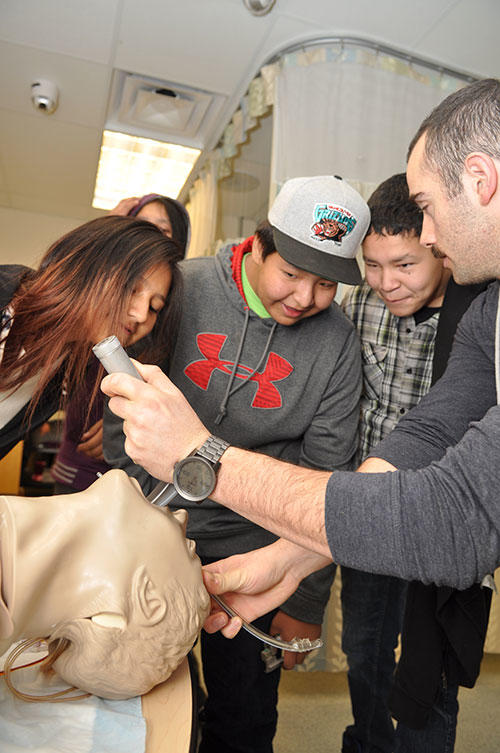
Students from Morley Community School interact with a cardiac patient simulator in the anatomy lab.

Students from Morley Community School interact with a cardiac patient simulator in the anatomy lab.
A group of junior high students were treated to a behind-the-scenes look inside the Faculty of Medicine's MD program on Nov. 20.
With instruction provided by med student volunteers, about 30 Grade 8 and 9 students from Morley Community School made their way through several medical learning stations in the anatomy lab over the course of the visit. The group was invited to the University of Calgary's Foothills Campus as part of the Aboriginal Health Program's Mini Medical School initiative.
The students checked each other's reflexes in the physical exam station, learned about medical imaging, practiced intubation, met Harvey – a cardiac patient simulator mannequin – and learned hands-on about anatomy and pathology. Afterward, the students had a lunchtime Q&A session with medical students and the co-ordinator about med school admissions and life as a med student.
The Aboriginal Health Program was established in 2008 to support the Faculty of Medicine's objectives to enhance Aboriginal student recruitment, admissions and retention, as well as faculty and curriculum development in the area of Aboriginal health.

The visiting students are shown how to intubate by medical student Kevin Lanni.
"The Aboriginal Health Program delivers outreach initiatives to community secondary schools and youth career fairs, on and off reserve, in the form of workshops and presentations. The program also facilitates in-house events like Mini Med School each year," says Sue-Ann Facchini, program co-ordinator.
The program also partners with the faculties of medicine, nursing, veterinary medicine and engineering, and organizations like Minds in Motion, Let's Talk Science and Operation Minerva, to build Aboriginal youth awareness of and interest in a career in medicine through both knowledge and experience.
"The Faculty of Medicine is likely perceived to be a foreign and inaccessible environment for many people, including Aboriginal youth," says Dr. Lindsay Crowshoe, program director.
"We hope that by offering a positive and critical experience within our institution, Aboriginal youth set their sights on medicine as a potential career goal."